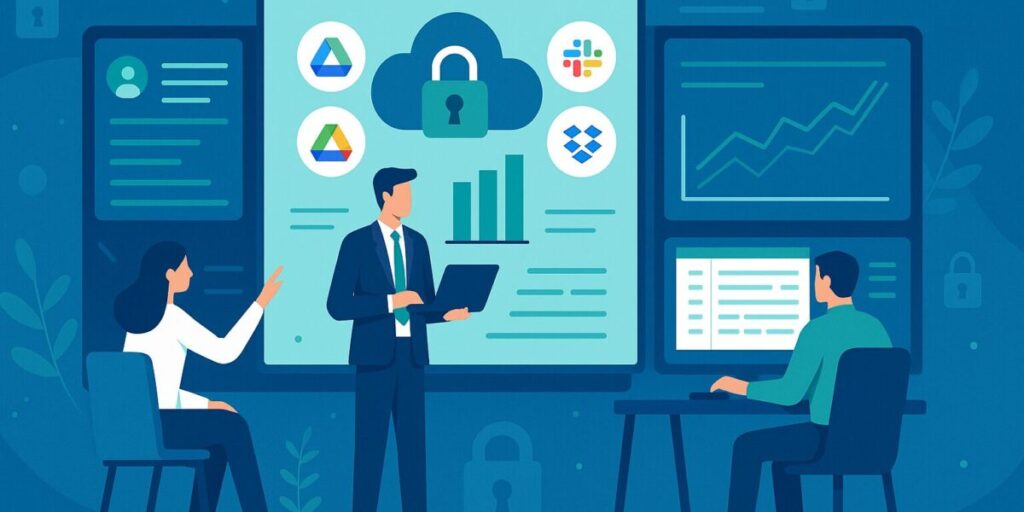In the world of technology, SaaS (Software as a Service) has transformed the way companies use and manage software. But what are they? SaaS assets?
SaaS assets are subscription-based software that companies use to meet their operational needs, such as collaboration tools, CRM, ERP, and more. These assets are unique because they are not physically purchased or installed on the company's servers, but rather accessed via the Internet.
In practice, a SaaS asset can be a CRM (Customer Relationship Management) tool, an ERP (Enterprise Resource Planning) or even a video conferencing platform. These assets are essential to keeping up with the fast pace of modern business.
The Connection Between SaaS Assets and IT Asset Management
Within the scope of IT asset management (ITAM – IT Asset Management), SaaS assets play a critical role. While traditional IT asset management focuses on on-premises hardware and software, the SaaS era demands a more dynamic approach. This includes:
- Full visibility: Map and track all SaaS assets used in the organization, regardless of the department that purchased them.
- Financial control: Monitor costs, avoid duplicate licenses, and identify opportunities for contract renegotiation.
- Compliance and security: Ensure that SaaS assets comply with internal and regulatory policies, as well as mitigate Shadow IT risks (use of unauthorized software).
Benefits of integration with ITAM
Integrating SaaS assets into IT asset management brings numerous benefits:
- Reduction of operating costs: Identifying underutilized or redundant subscriptions generates immediate savings.
- Greater operational efficiency: Centralizing management allows IT teams to have a complete overview, facilitating decision-making.
- Improvement in information security: With proper control, it is possible to reduce vulnerabilities associated with unmanaged access.
Why is asset management important?
Effective SaaS asset management is essential for:
- Reduce costs: Identifying underutilized or unused licenses helps avoid waste.
- Ensure compliance: Monitor contract renewals and avoid penalties for inappropriate use.
- Increase efficiency: Ensure employees have access to the tools they need without redundancies.
How to start managing your SaaS assets?
- Map your tools: List all SaaS solutions used in the company, including those purchased directly by departments (known as Shadow IT).
- Rate usage: Analyze usage data to determine which tools are indispensable and which can be discarded.
- Implement a management system: Tools like MattZero help centralize control and optimize SaaS assets.
SaaS assets are the digital heart of modern operations. Managing them strategically can bring savings, security and efficiency to your company. Want to know more? Contact MattZero and find out how we can help your team maximize the value of your SaaS assets!
Tags: saas product, contact us, saas management, software asset, software asset management, saas companies, customer service, what are the benefits, cloud solutions, cash flow, cloud service provider, software asset management sam, saas provider, spend management, cloud spend, support center, reasons to adopt, company finance, artificial intelligence, databases, remotely accessed, b2c saas, initial costs, intangible assets, saas products, financial health, customer support, what are the main ones, saas applications, software asset, saas contract, intellectual property, work with us, business model, hardware asset management, saas model, cloud computing, saas customers, software licenses, saas providers, iaas understand, saas providers, talk to an expert, saas contract customers.





